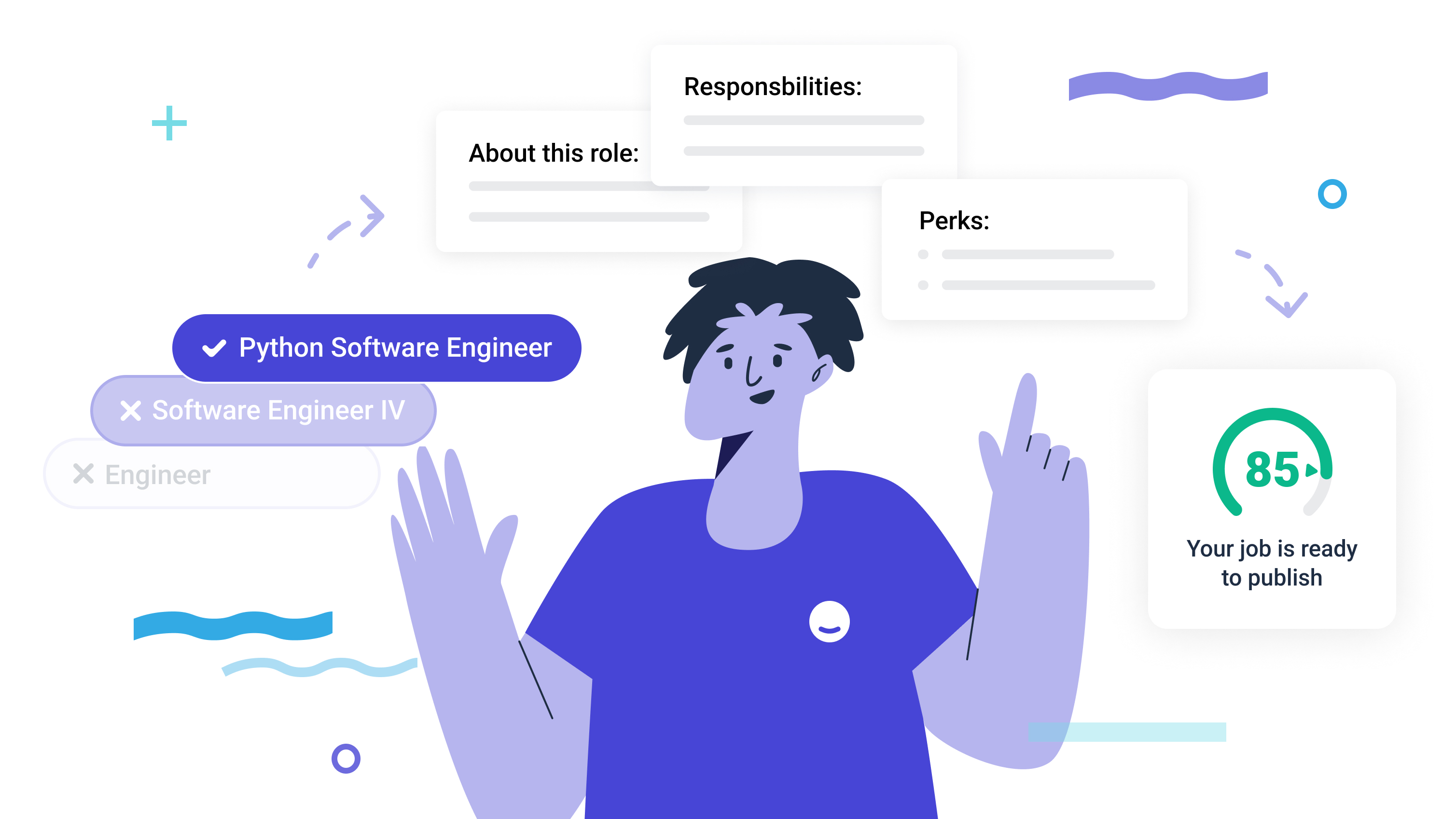Five Steps to Creating Inclusive Job Descriptions

Inclusive job descriptions employ non-biased job description language, diversity statements, clear requirements, benefits and perks, and widespread publication. They ensure that all qualified job seekers feel comfortable applying. No matter the color of their skin, their gender, sexual orientation, accent, or anything else.
So what makes job descriptions inclusive? And how do you know yours are welcoming to folks of all stripes? Start by following these five steps.
1. Choose a searchable, industry-standard title that job seekers can find and recognize.
2. Be absolutely clear about the role, the responsibilities, and the requirements.
3. Authentically represent your company and culture by adding diversity statements and benefits/perks sections.
4. Use clear, non-biased language that welcomes job seekers of all backgrounds.
5. Publish your job ad everywhere job seekers are looking for it.
1. Choose a searchable, industry-standard title that job seekers can find and recognize.
The job title you use on a job post isn’t just an aesthetic or organizational choice. When it comes to external use (i.e., job ads), job titles have a different function. Inclusive job descriptions include titles that are easy to find and recognize.
A job title is the focal point where hiring teams, job seekers, and job boards all first connect. Hiring teams use titles to define and categorize roles. Job seekers use titles as keywords to search for work on job boards. And job boards use titles as keywords to show listings to job seekers on their sites.
Industry-standard titles are crucial. Use industry-standard titles as opposed to internal titles; so, Java Developer, not Java Ninja. Describe the area of expertise; so, Python Software Engineer, not Software Engineer. (And definitely not just Engineer ─ there are dozens of engineering positions.) Keep titles short (between four to six words) so they don’t confuse and deter job seekers (or get truncated by job search engines). And skip the internal leveling indicators (e.g., Java Developer II).
Also, don’t inflate the title unnecessarily. Instead of Senior Java Developer if the job only requires two years of experience, just Java Developer. Our own research shows that inflating a job title can negatively impact your applicant funnel.
In a recent study of financial analyst titles, we found that job titles including the word ‘Senior’ in them attracted fewer applicants on average. They attracted 29% fewer applicants overall, 39% fewer qualified applicants, and 27% fewer female applicants.
Finally, include a location for your job because job boards use location to determine search results. Always include the city and state in the location field, and include ‘or Remote’ if you’re hiring for remote work. Meanwhile, never include vague locations like ‘Headquarters’ or ‘Warehouse.’
2. Be absolutely clear about the role, the responsibilities, and the requirements.
The closer a job description matches the actual job, the more qualified applicants it’s likely to attract. Conversely, the less a job description matches the job…well, the more time your hiring team will spend sifting through applications or sourcing candidates on LinkedIn.
Inclusive job descriptions are crystal clear on what a person does in a role, whom they report to, and what skills and abilities they need to succeed. And they should stick closely to that list.
Make sure your requirements match the job. Otherwise, you could deter qualified candidates and attract unqualified candidates. Don’t inflate the job with unnecessary education qualifications or certifications, dump a laundry list of nice-to-haves in there, include conflicting skills, or list soft skills that don’t actually tell job seekers anything. Keep it concise and clear.
Also, remember the difference between job responsibilities and job requirements. Responsibilities are the functions an employee will perform. Requirements are the certifications, education, skills, et cetera that an applicant needs to already have in order to step into the role.
Start with responsibilities when writing job descriptions. Figure out exactly what the person will need to do. Be specific. After that, figure out what skills the person will need to be able to fulfill those responsibilities.
3. Authentically represent your company and culture by adding diversity statements and benefits/perks sections.
Savvy job seekers don
Post Your Ad Here
Comments